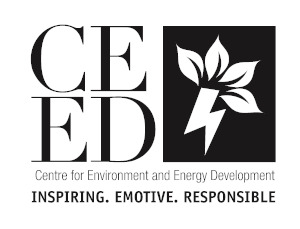
“Health and Energy Integration” is one of the promising avenues for achieving the twin goals of ensuring energy security to the health institutions and at the same time enhancing accessibility of health services to the people.
The focus of energy access has historically been mostly at the household level. It is only recently that reliable access to electricity has been recognised as vital in health institutions for a variety of functions such as deliveries, vaccine storage, emergency services, clean water supply, and staff retention.
Healthcare interventions in Jharkhand as well as the wellness of people and communities are significantly affected by the issues in reliable energy access. In terms of overall health performance among large states, Jharkhand ranks 13th out of 19 states, with a score of 47.55, according to the NITI Aayog’s Health Index, 2021. The state’s health care delivery system has been affected by the unreliable energy supply, which is mostly brought on by the state’s ageing infrastructure, power availability issues and large dependence on conventional power sources.
In this context, Decentralized Renewable Energy (DRE) presents a promising opportunity to the state in strengthening health services and sustainable healthcare to become future ready in true sense.
DRE as a Silver Lining for Revitalising HealthInfrastructure
Healthcare is one of the most energy-intensive sectors since operations are ongoing around the clock. Given the topographical fragility of many remote and rural areas in Jharkhand, DRE-powered health centres, such as solar PV systems, could be a viable solution for powering rural health centers.
Decentralized Renewable Energy (DRE) systems also have a number of benefits, including the flexibility to design systems that can accommodate the power load, reliability of performance, critical loads like vaccine refrigerators, and supplying service to remote or disaster- prone areas where access related challenges are at their lowest. These systems could either provide full power or act as a backup, possibly in conjunction with storage, to ensure a consistent supply of electricity, especially during peak hours.
Sustainability in Healthcare & Way Forward
Given that power demand in the health sector is expected to reach 175 MW as per our study “Future Ready Jharkhand: RE Powering Health in Jharkhand,” There is a need to consider a greener energy transition in public health infrastructure and a robust policy mechanism for Health and Energy integration in order to improve the effectiveness and dependability of health-care delivery systems to those in need.
The objectives of this study are to provide information about the current state of the healthcare and delivery system, to examine infrastructure gaps in the field of public health, and to examine the barriers and viable strategies for utilising DRE to revitalise health institutions in Jharkhand. The roadmap underscores the significant role that renewable energy will play in achieving a low-carbon development path in the state and provides a visionary roadmap for the healthcare sector over the next 10 years.
The conference ‘Future Ready Jharkhand: RE-Powering Health in Jharkhand’ also looks at how to enable ecosystems for developing the health infrastructure in Jharkhand and promote conditions that would promote the use of DRE as a sustainable energy source.
